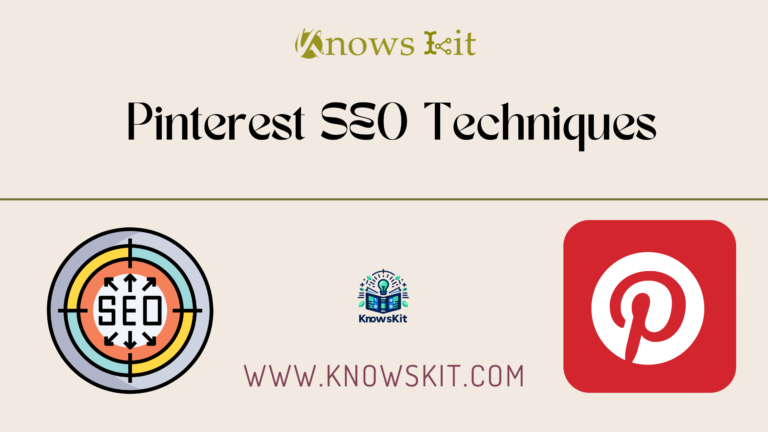Whitelisting on social media – a term that might seem technical at first glance, but its significance in the digital landscape is immense. In an era where online presence is crucial, understanding the nuances of whitelisting on social platforms is not just beneficial; it’s imperative. This comprehensive guide delves deep into the world of social media whitelisting, offering insightful knowledge for both newcomers and seasoned netizens alike.
Understanding Whitelisting on Social Media
![Mastering Whitelisting on Social Media [2024 Exquisite Guide] 2 Social media icons Facebook, Instagram, Twitter with approval check marks representing whitelisting.](https://www.knowskit.com/wp-content/uploads/2024/01/the-essence-of-social-media-whitelisting-1024x585.png)
What is Whitelisting on Social Media?
Whitelisting on social media refers to the practice of explicitly allowing certain entities—such as users, advertisers, or specific types of content—to be exempt from the usual restrictions or moderation processes. This concept is akin to having an exclusive guest list where only approved members are granted certain privileges or freedoms.
- Key Characteristics of Whitelisting:
- Selective Approval: Only pre-approved entities are allowed.
- Trust and Safety: Focuses on creating a safe and trustworthy environment.
- Customization: Users or brands can tailor their interaction on the platform based on their preferences and safety requirements.
Whitelisting serves as a tool for users and brands to control their experience and interactions on these platforms more effectively. It’s particularly crucial in a digital age where content overload and misinformation are prevalent.
History and Evolution of Whitelisting in Social Media
Social media’s journey from a casual interaction platform to a complex ecosystem has seen the evolution of various content moderation practices, including whitelisting. This evolution reflects the changing needs and challenges faced by users and platforms alike.
- Early Days: Initially, social media platforms had minimal content control, primarily focusing on removing spam or inappropriate content.
- Rise of User Control: As platforms grew, they recognized the need for users to have more control over their experience. This led to the introduction of features allowing users to mark certain entities as ‘safe’ or ‘trusted’.
- Advanced Moderation: With the rise of AI and machine learning, platforms can now offer more sophisticated whitelisting options. These options are not just reactive (based on user input) but also proactive, using algorithms to predict and identify content that might be suitable for whitelisting.
Milestones in Social Media Whitelisting:
- 2000s: Introduction of basic spam filters and user-controlled settings.
- 2010s: Social media giants like Facebook and Twitter start implementing more refined user control features.
- Late 2010s: AI-driven content moderation becomes more prominent, leading to advanced and predictive whitelisting mechanisms.
The concept of whitelisting on social media is a testament to how these platforms have evolved to provide safer and more personalized experiences for their users. It reflects a shift from a one-size-fits-all moderation approach to a more nuanced, user-centric model. This evolution continues as technology advances, and user needs become more sophisticated.
The Mechanics of Whitelisting
How Whitelisting Works on Major Social Media Platforms
![Mastering Whitelisting on Social Media [2024 Exquisite Guide] 3 Timeline infographic showing key milestones in social media whitelisting evolution](https://www.knowskit.com/wp-content/uploads/2024/01/tracing-the-history-of-whitelisting-on-social-media-1024x585.png)
Each social media platform has its unique way of implementing whitelisting. For instance, Facebook allows page owners to whitelist specific users, enabling them to post content without prior approval. Instagram, on the other hand, offers whitelisting for brands to authorize influencers to post on their behalf. Twitter uses a more subtle form of whitelisting, where verified accounts enjoy a kind of implicit trust, impacting how their content is treated.
Comparison of Whitelisting Features Across Major Social Media Platforms
| Platform | Type of Whitelisting Available | Primary Use | Unique Features/Limitations |
|---|---|---|---|
| Page-specific user permissions | Content control for business pages | Allows whitelisting of individual users | |
| Influencer-brand content partnerships | Brand marketing via influencers | Focuses on branded content and ads | |
| Account verification and trust | Improved content visibility | Verification offers a form of implicit trust | |
| Company page moderation | Professional content and brand management | Tailored for B2B interactions and networking | |
| YouTube | Creator-controlled comment moderation | Managing user engagement on videos | Allows creators to whitelist certain users |
Platform-specific Whitelisting Features:
- Facebook: Page-specific user permissions.
- Instagram: Influencer-brand content partnerships.
- Twitter: Implicit trust through account verification.
Tools and Technologies Behind Whitelisting
Behind the scenes, a blend of technology and human oversight governs the whitelisting process. Algorithms play a significant role, especially in filtering and identifying content or users who meet the criteria for whitelisting. However, manual intervention is often necessary to ensure accuracy and fairness.
Case Study: AI in Social Media Whitelisting
- Background: The integration of AI for content moderation.
- Outcome: Enhanced efficiency in identifying eligible content for whitelisting, while also highlighting the need for human oversight to address AI’s limitations.
The Importance of Whitelisting
Advantages of Whitelisting on Social Media
The benefits of whitelisting in social media are multifaceted. For users, it’s about getting their content seen without being wrongly flagged. For businesses, it’s an invaluable tool in managing their online presence and safeguarding their brand.
Key Advantages:
- Content Visibility: Ensures that legitimate content reaches the audience without being erroneously blocked.
- Brand Protection: Allows businesses to maintain control over their brand image on social platforms.
Whitelisting and Online Safety
A significant aspect of whitelisting is its contribution to online safety. By allowing only vetted users or content, platforms can significantly reduce the risk of harassment, misinformation, and other online dangers.
Expert Quote on Online Safety:
“Whitelisting is an underutilized yet powerful tool in enhancing the safety and integrity of online spaces.” – [Digital Safety Expert]
Whitelisting from a Business Perspective
![Mastering Whitelisting on Social Media [2024 Exquisite Guide] 4 Symbols of content visibility and brand protection in social media whitelisting.](https://www.knowskit.com/wp-content/uploads/2024/01/advantages-of-effective-whitelisting-on-social-media-platforms-1024x585.png)
Whitelisting for Business and Marketing
In the dynamic world of digital marketing, whitelisting on social media emerges as a strategic asset for businesses. It’s not just a tool for content moderation, but a means to enhance brand presence and consumer trust.
- Brand Safety in Advertising: In the era of programmatic advertising, where ads can appear in various online spaces, whitelisting ensures that ads are displayed in environments that align with the brand’s values and image. This is crucial for maintaining a positive brand reputation.
- Enhancing Marketing Campaigns: By whitelisting influencers or content creators, brands can extend their reach while maintaining control over how their products are represented. This is particularly important in influencer marketing, where the brand message needs to align with both the influencer’s style and the brand’s ethos.
- Building Consumer Trust: In a landscape where users are increasingly wary of advertisements and sponsored content, whitelisting can be used to build and maintain consumer trust. When content is marked and comes from a trusted source, consumers are more likely to engage positively with it.
Case Study: Successful Whitelisting Strategies in Marketing
- Background: A leading cosmetic brand, aiming to boost its online presence, implemented a whitelisting strategy involving influencers and content creators.
- Approach: The brand selectively whitelisted influencers who resonated with its values, granting them the freedom to create authentic content while adhering to brand guidelines.
- Result: The campaign led to a significant increase in brand engagement and a positive reception from the target audience, showcasing the power of well-executed whitelisting in marketing.
Managing User-Generated Content Through Whitelisting
User-generated content (UGC) plays a pivotal role in shaping brand perception on social media. Whitelisting emerges as a crucial tool in managing this content to align with a brand’s messaging and values.
- Curating Content: Brands can whitelist users or content that positively reflects their image, ensuring that the UGC associated with them is in line with their marketing strategy. This is especially useful in mitigating risks associated with unsolicited or off-brand UGC.
- Encouraging Positive Engagement: By whitelisting, brands encourage a certain level of quality and relevance in the content associated with them. This not only enhances the brand’s image but also fosters a community of users who create content in alignment with the brand’s ethos.
- Maintaining Control: Whitelisting allows businesses to maintain a degree of control over how they are represented on social media. This is especially important in an era where a single negative post or association can have far-reaching impacts on a brand’s reputation.
Best Practices for UGC Management:
- Establish Clear Guidelines: Provide content creators with clear, concise guidelines on what is acceptable and encouraged.
- Regular Monitoring: Continuously monitor UGC to ensure it aligns with brand values and adjust the whitelist as needed.
- Engagement: Actively engage with users who create quality content and consider incentivizing them to maintain a steady flow of positive UGC.
In conclusion, whitelisting from a business perspective is not just about controlling content but leveraging it to enhance brand image, engage consumers, and navigate the vast, often unpredictable terrain of social media marketing. By strategically implementing whitelisting practices, businesses can turn social media into a powerful ally in their marketing arsenal.
Challenges and Criticisms
The Challenges of Implementing Whitelisting
![Mastering Whitelisting on Social Media [2024 Exquisite Guide] 5 Checklist and strategies for effective whitelisting on social media.](https://www.knowskit.com/wp-content/uploads/2024/01/implementing-whitelisting-practical-steps-and-strategies-1024x585.png)
Implementing an effective whitelisting strategy is not without its challenges. These can range from technical hurdles, such as accurately identifying content for whitelisting, to ethical questions concerning freedom of expression.
Common Challenges:
- Technical Complexity: Ensuring accurate identification of whitelist-worthy content.
- Ethical Dilemmas: Balancing moderation with freedom of speech.
Criticisms and Counterarguments
Critics often argue that whitelisting can lead to a form of censorship, where only certain voices are heard. However, proponents emphasize its role in creating safer online spaces.
Criticisms Addressed:
- Censorship Concerns: Ensuring a fair and transparent process to mitigate accusations of bias.
- Platform Responses: How major social media platforms address these criticisms.
The Future of Whitelisting
![Mastering Whitelisting on Social Media [2024 Exquisite Guide] 6 Futuristic representation of evolving trends in social media whitelisting.](https://www.knowskit.com/wp-content/uploads/2024/01/the-future-of-whitelisting-in-social-media-advanced-ai-and-community-standards-1024x585.png)
The future of whitelisting in social media is poised to evolve with the rapidly changing digital landscape. As technology advances and user behavior shifts, the way whitelisting is implemented and its impact on both users and brands will continue to develop. Here are key areas where we can expect significant changes:
1. Advanced AI and Machine Learning
- Enhanced Content Moderation: Future whitelisting mechanisms will likely rely more heavily on sophisticated AI and machine learning algorithms. These technologies can improve the accuracy of content filtering, making whitelisting more effective and efficient.
- Predictive Analytics: AI could be used for predictive analytics in whitelisting, allowing platforms to anticipate which users or content should be whitelisted based on past behavior and engagement patterns.
2. Greater Personalization and User Control
- Customizable Whitelisting: Social media platforms may offer users more granular control over their whitelisting preferences, allowing for a highly personalized online experience.
- User-Driven Content Curation: We might see a shift towards more user-driven content curation, where users have a significant say in what gets whitelisted, leading to more democratic content moderation.
3. Integration of Blockchain Technology
- Decentralized Moderation: Blockchain technology could introduce decentralized content moderation systems, where whitelisting decisions are made collectively rather than by a centralized authority.
- Transparency and Trust: Using blockchain for whitelisting can increase transparency and trust in the process, as it provides a tamper-proof record of decisions and actions.
4. Enhanced Brand-Influencer Collaborations
- Dynamic Whitelisting in Marketing: The role of whitelisting in influencer marketing is likely to become more dynamic. Brands could use real-time data to adjust their whitelisting strategies for maximum impact.
- Micro-Influencer Focus: There might be a shift towards whitelisting micro-influencers with highly engaged audiences for more targeted and authentic marketing.
5. Ethical and Regulatory Considerations
- Addressing Ethical Concerns: As whitelisting becomes more sophisticated, platforms will need to address ethical concerns related to censorship and freedom of speech.
- Compliance with Regulations: With increasing concerns over data privacy and user rights, whitelisting practices will need to evolve to comply with regulatory changes globally.
6. Cross-Platform Whitelisting Strategies
- Unified Whitelisting Across Platforms: We may see the development of tools and strategies that allow for cross-platform whitelisting, enabling brands to maintain a consistent presence across different social media channels.
7. User Education and Awareness
- Increased Focus on User Education: As whitelisting becomes more complex, there will be a greater need for educating users about how it works and how they can manage their preferences effectively.
8. The Role of Community and User Feedback
- Community-Driven Moderation: Social media platforms might increasingly rely on community feedback and user reports to make informed decisions about whitelisting, fostering a more community-centric approach.
Practical Tips and Strategies
![Mastering Whitelisting on Social Media [2024 Exquisite Guide] 7 Illustration of ethical balancing in social media whitelisting with scales of justice.](https://www.knowskit.com/wp-content/uploads/2024/01/navigating-the-ethics-of-social-media-whitelisting-1024x585.png)
Implementing an effective whitelisting strategy on social media requires careful planning and execution. Here are some practical tips and strategies that can help both individuals and businesses to leverage whitelisting for better results:
Best Practices for Effective Whitelisting
| Best Practice | Benefits | Examples/Case Studies |
|---|---|---|
| Define Clear Objectives | Aligns whitelisting with goals | E.g., Brand safety, audience engagement |
| Regular Monitoring | Ensures relevancy and effectiveness | Use of analytics tools for tracking |
| Engage with Audience | Enhances user experience and loyalty | Encouraging user-generated content |
| Utilize AI and Automation | Improves efficiency and accuracy | AI for predictive content moderation |
| Prioritize Ethical Practices | Maintains trust and credibility | Transparent content moderation policies |
| Platform-Specific Strategies | Tailors approach to each platform | Custom strategies for Facebook, Instagram, etc. |
| Educate and Train Team | Ensures consistent and informed approach | Regular staff training on social media trends |
1. Establish Clear Whitelisting Criteria
- Define Objectives: Clearly outline what you aim to achieve with whitelisting, whether it’s brand protection, improved content visibility, or enhanced user engagement.
- Set Guidelines: Develop specific criteria for what qualifies for whitelisting. This might include content quality, relevance, audience alignment, and adherence to community standards.
2. Regularly Monitor and Update the Whitelist
- Stay Updated: Regularly review and update your whitelist to ensure it remains aligned with your objectives and responsive to changes in content trends and audience behavior.
- Use Analytics: Utilize social media analytics tools to track the performance of whitelisted content and make data-driven adjustments.
3. Engage with Your Audience
- Encourage User Participation: Engage with your audience to understand their preferences and encourage them to create content that aligns with your brand values.
- Feedback Loop: Establish a feedback loop where users can suggest content or accounts for whitelisting, fostering a sense of community involvement.
4. Leverage Automation and AI Tools
- Automate Processes: Utilize automation tools for routine tasks like monitoring and flagging content for review, which can save time and improve efficiency.
- Integrate AI: Use AI-driven tools for predictive analytics and to enhance the accuracy of content identification for whitelisting.
5. Prioritize Transparency and Ethics
- Be Transparent: Communicate your whitelisting criteria and processes to your audience to build trust and transparency.
- Ethical Considerations: Ensure that your whitelisting practices align with ethical standards and respect users’ freedom of expression.
6. Tailor Whitelisting to Different Platforms
- Platform-Specific Strategies: Understand that each social media platform has its unique features and audience. Tailor your whitelisting approach to suit the specificities of each platform.
- Cross-Platform Consistency: While customizing for each platform, maintain a consistent brand voice and standards across all platforms.
7. Educate and Train Your Team
- Staff Training: Ensure that your team is well-trained in the principles and practices of whitelisting.
- Stay Informed: Keep up with the latest trends and updates in social media moderation and whitelisting practices.
8. Build and Maintain Relationships
- Collaborate with Influencers: For businesses, building relationships with influencers and content creators can enhance the effectiveness of your whitelisting strategy.
- Community Engagement: Actively engage with your community to foster a positive environment and encourage content creation aligned with your brand.
9. Evaluate and Adjust Your Strategy Regularly
- Continuous Improvement: Regularly assess the effectiveness of your whitelisting strategy and be ready to make necessary adjustments.
- Adapt to Changes: Be flexible and adaptable to changes in social media trends, user behavior, and platform algorithms.
By following these practical tips and strategies, individuals and businesses can effectively utilize whitelisting on social media to enhance their online presence, protect their brand, and engage more meaningfully with their audience. These steps encompass a comprehensive approach to managing and optimizing content in the dynamic world of social media.
It’s important to continuously adapt to the evolving landscape of social media, staying informed about new tools, trends, and best practices. Regular evaluation and adjustment of your whitelisting strategy will ensure that it remains effective and aligned with your goals. Building and maintaining relationships, particularly for businesses engaging with influencers, will also play a crucial role in the success of your whitelisting efforts.
Effective whitelisting is about finding the right balance between automation and human judgment, transparency and privacy, and control and freedom. By implementing these strategies, you can harness the full potential of whitelisting to create a safe, engaging, and brand-aligned experience on social media.
FAQ
What Does Whitelisting Mean in Social Media?
Whitelisting in social media is a process where influencers grant brands permission to use their social media accounts for advertising. This allows brands to run ads using the influencer’s handle, giving them control over who sees these posts and the ability to target audiences beyond the influencer’s followers.
It also includes the possibility of making minor edits to the content and lengthening the shelf life of posts, especially beneficial for formats like Instagram Stories
How is Whitelisted Content Different from Branded Content?
Influencer-generated content (IGC) is often repurposed into brand-owned ads that run under the brand’s name across various channels. Whitelisting, however, allows brands to run ads through an influencer’s account, appearing under the influencer’s handle.
This gives brands more control over the content, including making edits and adding call-to-action buttons. Moreover, whitelisting enables the creation of dark posts, which are paid ads not visible on the influencer’s regular feed or stories, targeting specific audiences without overcrowding the influencer’s feed
What Are the Advantages of Whitelisting for Brands and Influencers?
For brands, whitelisting offers benefits like better content control, audience segmentation, enhanced relationships with creators, and higher engagement. Influencers, on the other hand, gain from increased creative freedom, better compensation, stronger brand relationships, and deeper audience insights. Both parties benefit from access to performance metrics, fostering a mutually beneficial relationship
How Do You Whitelist Influencers on Facebook and Instagram?
To whitelist influencers on these platforms, marketers need permission from creators through Facebook Business Manager. The influencer must have a Facebook Business Manager account linked to their Facebook page or Instagram handle.
Marketers can then request to add the influencer as a Business Partner, using their Business Manager ID or links to their social media profiles. Once accepted, brands can use these accounts for whitelisted ads
What Should Brands Consider When Choosing Influencers for Whitelisting?
Brands should look for influencers who create original, authentic content that aligns with their brand image. It’s important to vet influencers and verify their audience data, focusing on those with followers in the target demographic. This approach helps in building lookalike audiences and reaching potential new customers effectively
How Should Influencers Determine Whitelisting Rates?
Rates for whitelisting can vary based on factors like follower count, campaign length, and the influencer’s reputation. Generally, influencers may charge more for a larger following and longer campaign agreements.
It’s common for influencers to charge higher rates for whitelisting compared to standard sponsored posts, considering the added value and reach they provide
Conclusion
Whitelisting on social media, though complex, is a critical tool in the digital age. It offers numerous benefits ranging from enhanced online safety to improved brand management. By understanding its mechanics, advantages, and future trends, users and businesses can leverage whitelisting to create a more positive and safe online experience.
For More Reference
https://www.diva-portal.org/smash/record.jsf?pid=diva2%3A1804553&dswid=-3669

![Mastering Whitelisting on Social Media [2024 Exquisite Guide] 1 Checklist and strategies for effective whitelisting on social media.](https://www.knowskit.com/wp-content/uploads/2024/01/implementing-whitelisting-practical-steps-and-strategies.png)
![Maximizing Your Social Media Impressions [2024 Complete Guide] 14 Maximizing Your Social Media Impressions [2024 Complete Guide]](https://www.knowskit.com/wp-content/uploads/2024/01/brainstorming-for-social-media-ideas-768x439.png)




